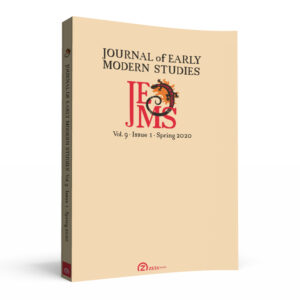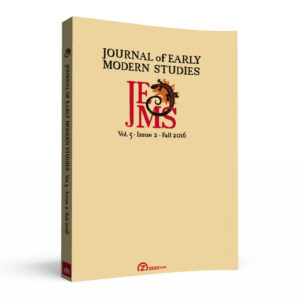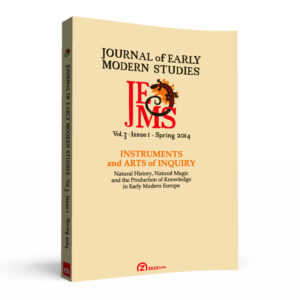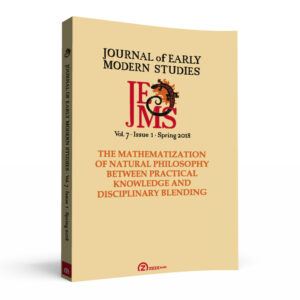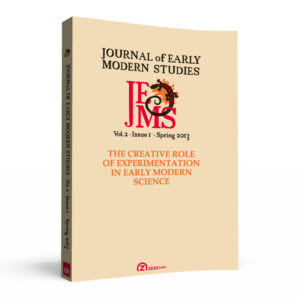CONTENTS:
ARTICLES
Petr PAVLAS, Lex secundum quam disponuntur omnia: Trichotomic Trees in Jan Amos Komenský’s Pansophical Metaphysics and Metaphorics [OPEN ACCESS]
Abstract: The goal of this article is to detail the opposition to “Ramean tree” dichotomic divisions which emerged in the age of swelling Antitrinitarianism, especially Socinianism. Scholars such as Bartholomaeus Keckermann, Jan Amos Komenský and Richard Baxter made a point of preferring the trichotomic to the dichotomic division of Petrus Ramus and the Ramist tradition. This paper tracks the origin of Komenský’s “universal triadism” as present in his book metaphorics and in his metaphysics. Komenský’s triadic book metaphorics (the notion of nature, human mind and Scripture as “the triple book of God”) has its source in late sixteenth-century Lutheran mysticism and theosophy, mediated perhaps by Heinrich Khunrath and, above all, by Johann Heinrich Alsted. Komenský’s metaphysics follows the same triadic pattern. What is more, Komenský illustrates both these domains by means of Ramist-like bracketed trees; regarding book metaphorics, clearly his sources are Khunrath and Alsted. Although inspirations from Lullus, Sabundus and Nicholas of Cusa are most probably involved, the crucial role has to be ascribed to the influence of Lutheran mysticism and Alsted’s “Lullo-Ramism.”
Sergius KODERA, Needles and Pins on the Scaffold: Francis Bacon and Giovan Battista della Porta on the Motions of the Human Soul and the Passions of the Lodestone
Abstract: This article discusses the powers of the lodestone for two authors, Francis Bacon and Giovan Battista della Porta, relating their observations on magnetism and human emotions to the field of learned natural magic. It investigates some of Bacon’s and Porta’s remarks on experimental work with lode- stones and the ways in which both authors translated the inexplicable powers of lodestones and magnetized iron into a series of principles that also served as a structure and explanation of human emotions (and vice versa). I suggest that at work here is not merely an anthropomorphic projection at nature, but also (and conversely) an interest in and fascination with the naturalization and mechanization of human emotions. My contribution examines passages from Bacon’s Advancement of Learning, the Novum organum, the Sylva sylvarum and his Essays; from Della Porta’s Magia naturalis (second edition 1589) and his comedy Sorella (1604). First, the insight that Bacon’s and Della Porta’s perception of magnetic movements have a strong common bias: the identification with human emotions. Both authors postulate not merely a close analogy, but a mutual convertibility between the two phenomena and with animal spirits. Second, this synoptic approach is no one-way-street merely creating a characteristic perception of the phenomenon of magnetism: it also conditions the modes in which the human mind and emotions are perceived. Third, emotions—in particular love and hatred—are in principle as predictable as the movements of attraction and repulsion exercised by iron and lodestone.
Nicla RIVERSO, Behind the Scenes: Paolo Sarpi, a Natural Philosopher Friar
Abstract: My article explores Paolo Sarpi’s achievements in natural philosophy in order to define his contribution to the intellectual milieu of his time. Sarpi’s role as a natural philosopher has been underestimated, due to the fact that his research has been unpublished and has largely perished: his works on natural philosophy and his scientific discoveries were recorded in his private papers and diaries, kept in the Servite monastery in Venice, which was entirely destroyed by fire in 1769. I explain how Sarpi, because of his conflicts and strained relations with the Church of Rome, did not want to publish on natural philosophy, and I demonstrate how he operated in “silence,” cooperating with other natural philosophers behind the scenes in order to make important discoveries. Bringing up what is left of Sarpi’s writings, I examine the Servite’s accomplishments in physics and magnetism, and compare them with those of Gilbert, Garzoni, and Galileo. Through a careful analysis on passages from Sarpi’s correspondence and Pensieri, by focusing on his achievements in magnetism, I show that his research on magnetic fields had a significant bearing on his study of terrestrial motion and I point out how his study helped him to take his place among those scholars who led Galileo to develop his theory on motion and gravity.
Jo van CAUTER, Spinoza on Revealed Religion and the Uses of Fear
Abstract: This paper argues that fear constitutes an important part of Spinoza’s redefined version of revealed religion as presented in the Theological-Political Treatise. My claim is not only that obedience as conceived by Spinoza always entails fear, but that the biblical image of God as king or lawgiver requires fear to fulfill its function; and thus, by extension, that fear remains one of the very tissues that binds together the body politic. Although, throughout his corpus of work, Spinoza often associates fear with cognitive weakness and a destabilizing temperament, he also acknowledges its potential use for sustaining civic concord. My argument is both positive and negative: the state can foster sup- port for itself by the proper utilization of religious fear, but if it neglects to do so, it undermines its stability and risks falling victim to the destructive effects of superstition.
REVIEW ARTICLES
Mihnea DOBRE, Strategies of Dissemination for Cartesian Cosmology: Philosophy, Theology and “Mosaic physics” [Édouard Mehl, Descartes et la fabrique du monde. Le problème cosmologique de Copernic à Descartes, Paris: Presses Universitaires de France, 2019]
Daian BICA, Thinking with Mechanisms: Mechanical Philosophy and Early Modern Science [Domenico Bertoloni Meli, Mechanism: A Visual, Lexical, and Conceptual History, Pittsburgh: University of Pittsburgh Press, 2019]
BOOK REVIEWS
Georgiana D. HEDESAN – William R. Newman, Newton the Alchemist: Science, Enigma, and the Quest for Nature’s “Secret Fire,” Princeton: Princeton University Press, 2018
Ioana BUJOR – Jetze Touber, Spinoza and Biblical Philology in the Dutch Republic, 1660–1710, Oxford: Oxford University Press, 2018
Alexandru LICIU – Angus Vine, Miscellaneous Order: Manuscript Culture and the Early Modern Organization of Knowledge, Oxford: Oxford University Press, 2019
GUIDELINES FOR AUTHORS
ISSN: 2285-6382 (paperback)
ISSN: 2286–0290 (electronic)
ISBN: 978-606-697-124-9 (paperback)
ISBN: 978-606-697-125-6 (ebook)


